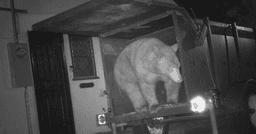Home / Environment / California Resorts to Lethal Measures to Protect Cattle from Surging Wolf Attacks
California Resorts to Lethal Measures to Protect Cattle from Surging Wolf Attacks
8 Nov
Summary
- California wildlife agents used drones, vehicles, and loud music to scare off wolves, but attacks continued
- State has now killed 4 wolves and plans to capture and relocate others to protect cattle
- Ranchers say wolf attacks have caused significant financial losses and stress

In the summer of 2025, California wildlife officials launched an unprecedented effort to scare off the growing number of wolves in the state's remote Sierra Valley. The state-run strike team used a variety of non-lethal tactics, including bean bag shots, all-terrain vehicles, drones, and blasting AC/DC music, to try and keep the endangered predators away from the region's sprawling cattle ranches.
However, despite the $1.4 million campaign and over 18,000 staff hours logged, the hazing efforts proved largely unsuccessful. Wolves from the Beyem Seyo pack continued to attack and kill cattle, with ranchers reporting over 90 confirmed or probable livestock kills this year - nearly double the number across the entire state in 2024.




